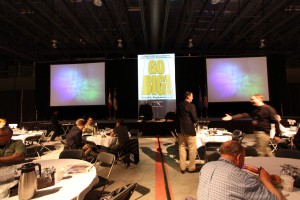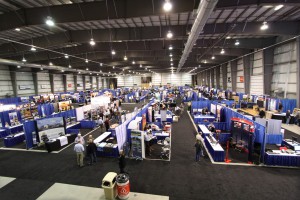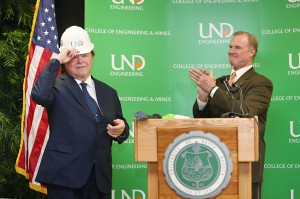What is “Combustion Efficiency?”
By: Casey Beeler, Vice President, IES, LLC.
In terms of oil field combustion equipment, combustion efficiency can mean a variety of things. In the world of natural draft combustors, the term usually refers to how “efficiently” the combustion device removes a target compound in a waste gas feed. Those target compounds, typically hydrocarbons, can range from low BTU (BTU/ft3), predominantly methane mixtures, to high, 3500 BTU or greater gas containing rich mixes of methane through C6+’s (Hexanes and larger hydrocarbons). The seemingly simple and often overlooked waste gas combustor is a workhorse in the field, required to meet the most complex and strictest regulated specifications.
“Remove” is really a misnomer. In 100% efficient combustion reaction (typically known as: Ideal, Theoretic, or Stoichiometric Combustion), the combustor should convert all of target contaminant hydrocarbon, say, methane (CH4) into Carbon Dioxide (CO2), Water (H2O) and Nitrogen gas (N2) plus heat – nothing else, nothing more.
This works very well in the theoretic world, but as any experienced hand will tell you, things are usually far from the ideal in the oil patch. Long chain hydrocarbons that should be liquid; but somehow stayed in a vapor state, exotic cyclic and double- or triple-bonded hydrocarbons, sulfur containing compounds, higher than expected oxygen levels, and entrained liquids are all (just to name a very few) situations that can influence how efficiently your combustor is combusting. These types of situations only take into consideration the feed gas stream; external factors can also turn a combustion device from an extremely efficient piece of equipment, into a soot-laden, smoke-belching, fine-inducing nightmare faster than you can say “what inspector?”
Most oil field combustors, also known as enclosed ground flares – are natural draft stacks. This means that the air required for an efficient combustion reaction is drawn into or “induced” into the stack through air intake ports at the bottom of the combustor. A pressure differential is created in the stack by the temperature difference between the base of the stack and the top of the stack creating this air flow. Clogged flame cells, air pressure inversions at the top of the stack due to high winds and flame cooling can cause a lack of induced air, which will lead to a rich combustion, a condition that can lead to smoke or significant noise from detonation.
Obviously, a maintenance program is extremely important to ensure that your combustors remain efficient. Choosing a combustion manufacturer who stands behind their equipment, providing warranty, service and even maintenance agreements is a good step in the right direction. Probably more importantly, choosing the right vendor involves assessing whether a manufacturer has performed and passed mandated state and federal testing guidelines.
Each state air quality agency require combustors meet specific destruction efficiencies and regulate the amount of emissions opacity or smoke a combustor can have in a given period of time. These rules are designed to be difficult in an attempt to guarantee that a combustor will operate efficiently under field conditions. Federally mandated EPA standards are separate, but very stringent guidelines that a combustor manufacturer must prove its products can pass. If a combustor is placed in the field and it hasn’t met EPA NSPS (Standards of Performance for New Stationary Sources), 40 CFR 60 Subpart OOOO, known as Quad O, the purchaser is responsible for a monitoring and testing schedule as described in the regulation, which can be an undue and costly burden.
Quad O can be a very expensive and difficult test to pass and often takes multiple days of testing to complete. It is a much more detailed testing protocol that a straight forward DRE test that shows a snapshot of a combustors operating efficiency. Manufacturers may try to bypass this requirement; however, the regulation is enforced nationwide by the EPA and, depending on the location, may be a state mandated requirement for permitting a wellsite. Either way, it is not a regulation that can be ignored by the manufacturer or producer. A combustor manufacturer that has performed and successfully passed Quad O testing is one that has demonstrated that its equipment meets or exceeds the strictest emissions standards required by law.
So, what are the takeaways? Combustion efficiency seems like a simple concept, but in reality, combustion of waste gas on a wellsite can entail very complex reactions, which are extremely sensitive to inputs. A regular maintenance program and a manufacturing partner willing to stand behind its products and have an established warranty and service agreements. Producers require combustion equipment that is engineered to the strictest specifications and can meet complex and ever changing inlet gas compositions, which have also been proven to meet stringent state and federal testing requirements. This is the most important requirement, and is why I left it as a parting thought: combustion equipment must be safe and follow best practices. Equipment that takes into consideration the human aspect and keeps operators safe and provides for easy field maintenance through good design should be at the top of any purchasing decision.
















